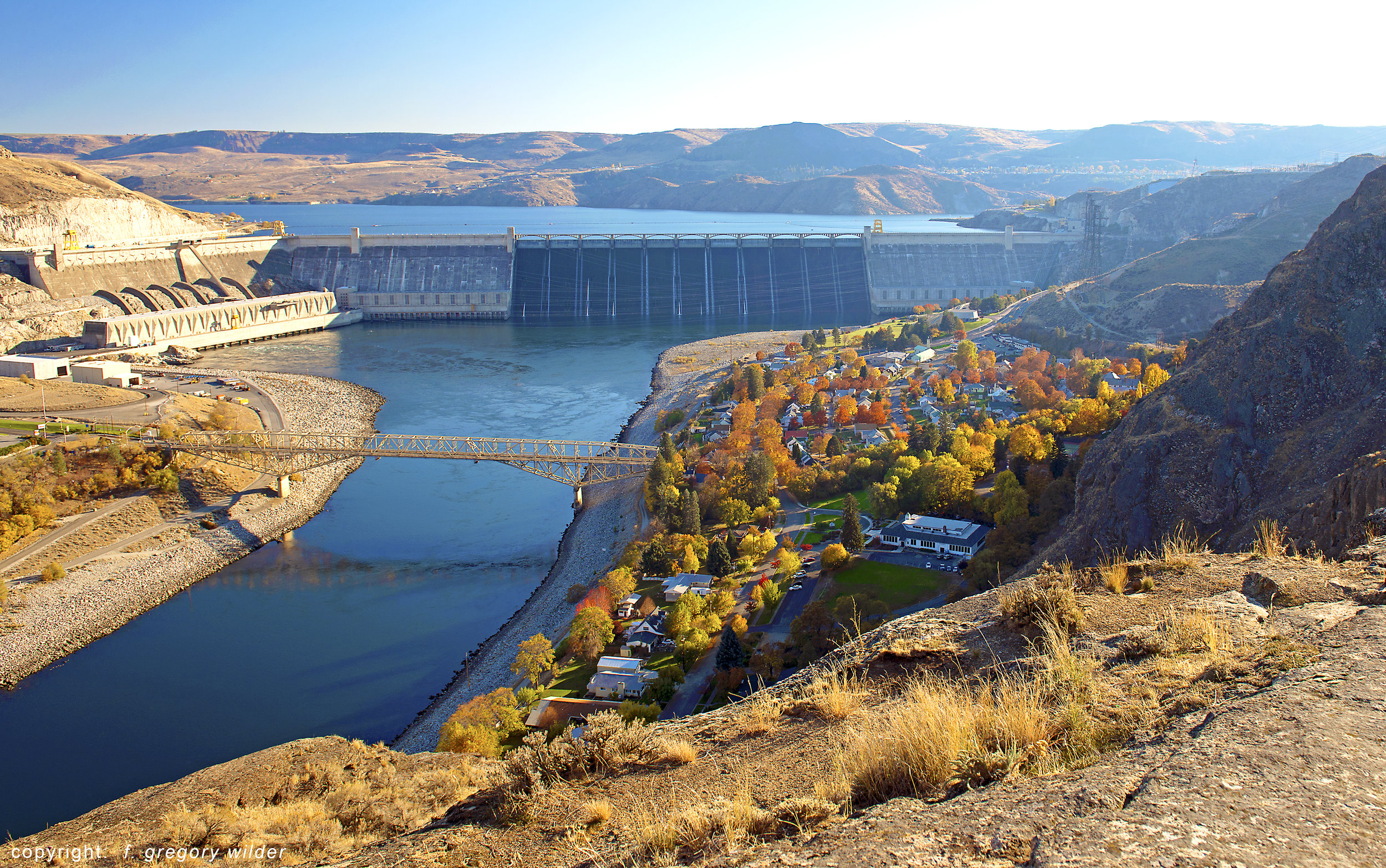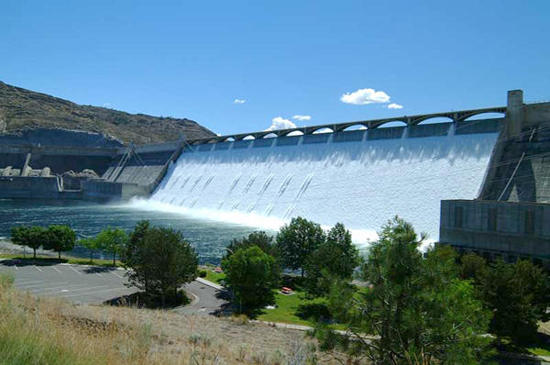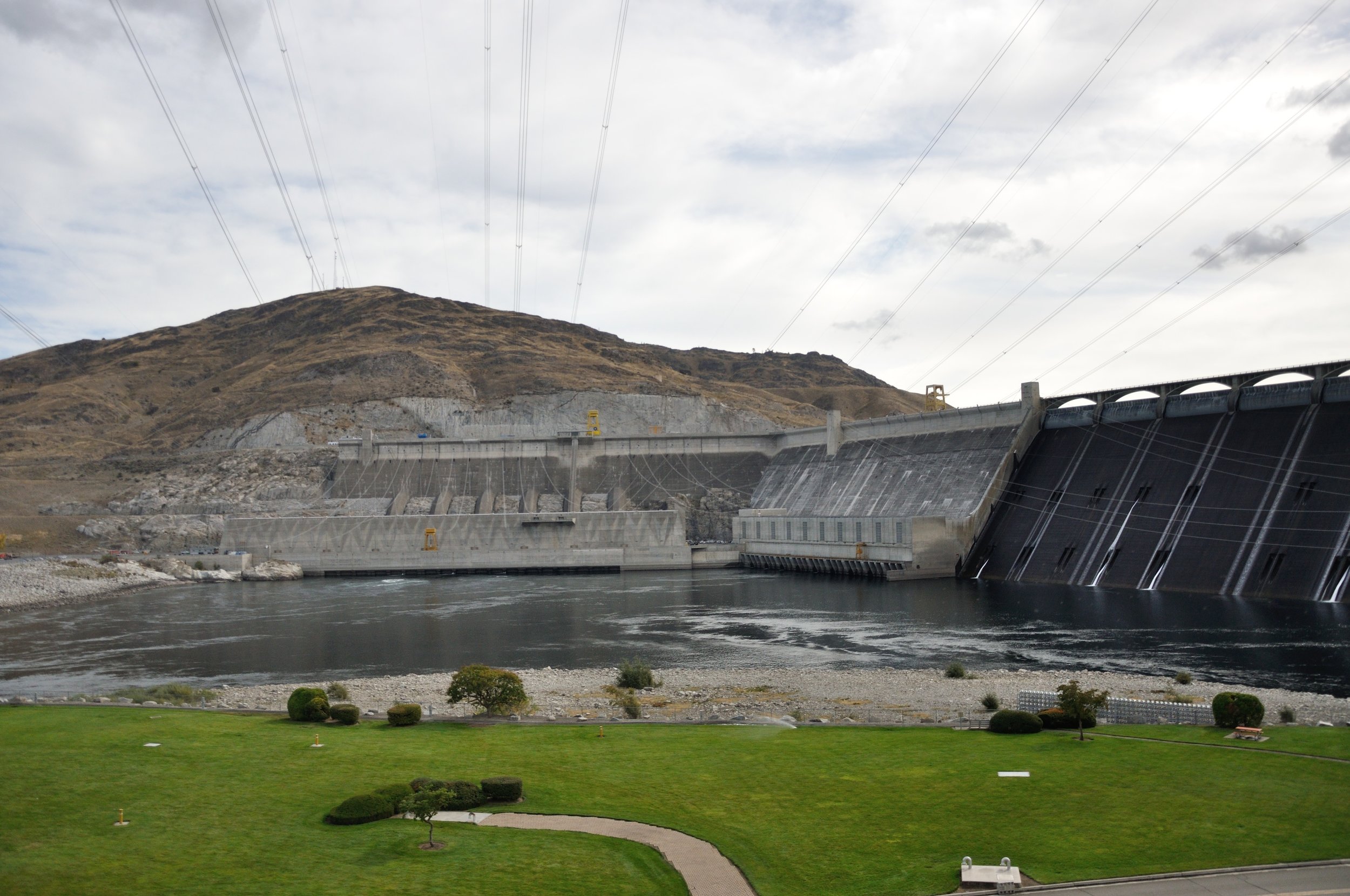
GRAND COULEE DAM
The Grand Coulee Dam
Visitor’s Center (509) 633-9265
The Columbia Basin Project, which includes Grand Coulee Dam as its main feature, is the Bureau of Reclamation's largest multipurpose project. Grand Coulee Dam includes three major hydroelectric power generating plants and a pump generating plant. The facilities provide power generation, irrigation, flood control, stream flow regulation for fish migration, navigation, and recreation.
Power production facilities at Grand Coulee Dam are among the largest in the world; the total generating capacity is rated at 6,809 megawatts. Average yearly power production is 21 billion kWh with power distributed to Washington, Oregon, Idaho, Montana, California, Wyoming, Colorado, New Mexico, Nevada, Utah and Arizona. In addition, Canada receives power under the Columbia River Treaty. Grand Coulee Dam is operated as part of a coordinated federal system of hydroelectric facilities, which provides 75% of the entire power supply of the Pacific Northwest.
In addition, Grand Coulee Dam funds a complex of three hatcheries (Leavenworth, Winthrop and Entiat), collectively known as the Leavenworth Complex, to mitigate for the loss of anadromous fish above the dam. Over 2 million spring Chinook and summer Steelhead are raised annually.
Authorized under the National Industrial Recovery Act and later by the Rivers and Harbors Act, Grand Coulee Dam and Left Powerplant were constructed between 1933 and 1941. The Columbia Basin Project Act of 1943, based on extensive studies known as the Columbia Basin Joint Investigations, authorized construction of the Columbia Basin Project, which consists of 330 miles of major distribution canals, lakes and reservoirs, and about 2,000 miles of laterals that currently irrigate approximately 670,000 acres of land.
The economic values of the Columbia Basin Project include irrigated crops valued at $1 billion annually, hydropower production of approximately $1.2 billion annually, and the prevention of more than $206 million in flood damages since 1950. The Columbia Basin Project also resulted in the creation of vast wetlands and riparian areas, and provides recreation benefits to about four million visitors each year.
This project made the development of the Pacific Northwest possible and its importance to the nation has been profound. Its influence spread outward to benefit all citizens. Construction of Grand Coulee Dam put thousands to work during the Depression. Grand Coulee's generators played a vital role in supplying power to build planes, ships, tanks and develop atomic energy during World War II. Following the war, the Columbia Basin Project provided opportunities for returning veterans to farm their own tracts of land. With the completion of the Third Power Plant in 1980, Grand Coulee's status as the largest hydropower generating facility in the United States was assured, and tangible benefits to Canadian residents were realized.
For more information, visit the Grand Coulee Dams Visitor Center located above West Coulee Dam, adjacent to the Columbia River Inn. The number is (509) 633-9265.
Information Provided by http://www.usbr.gov/


